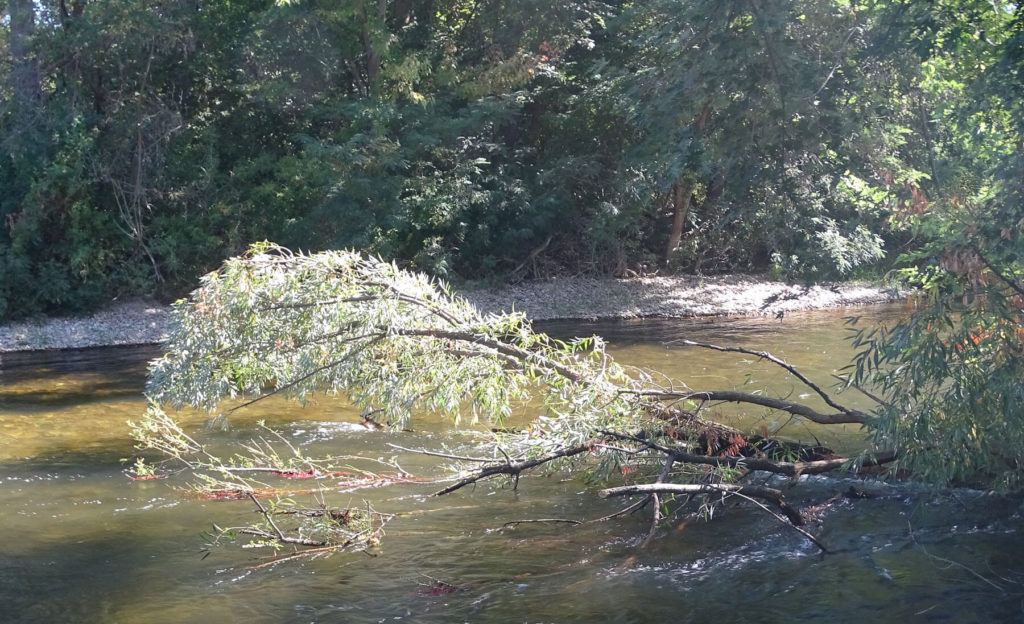WHAT TO DO IF YOU IDENTIFY AN IMMEDIATE SAFETY HAZARD IN THE BOISE RIVER CHANNEL?
Call the local sheriff’s office or County dispatch:
They will contact the appropriate responders. It may be a Fire District with water response capability, or a Flood District that may or may not be able to respond depending on river flows.

Boise River floaters: Be safe, watch out for hazards in lesser-known sections of the river; wear a PFD for safety
When the temperatures get hot, people like to cool off in the Boise River.
The safest and most popular section of the Boise River for rafting, tubing, Stand Up Paddle Boards, etc., runs for 6 miles from Barber Park in east Boise to the public takeout at Ann Morrison Park.
This section of the river has established access points, raft and tube rentals, shuttle buses and other services. Managed by Ada County Parks and Waterways, this section of the river is surveyed for hazards by the Boise Fire Department, Boise Parks and Recreation and Ada County prior to the opening of the float season.
More and people are floating lesser-known sections of the Boise River, however, which can raise safety issues for the general public.
Flood District #10 officials want to make sure river-floaters understand that they may encounter multiple, unforeseen hazards.
Boating safety officials recommend that floaters should always wear a personal floatation device (PFD) when floating the Boise River.
Please know that when you are floating the Boise River that “you are floating at your own risk, and you are responsible for your safety,” says Mike Dimmick, District Manager for Flood District #10.
Floaters should know that most of the Boise River has not been pre-scouted for hazards by the Boise Fire Department or other jurisdictions, officials said. Floaters can encounter multiple hazards in the river channel, including down trees, sharp objects hidden from view, irrigation diversions and other hazards in these lesser-known reaches of the Boise River, officials said.
“We encourage floaters who try unfamiliar reaches of the Boise River to pre-scout anything that looks dangerous, challenging or hazardous,” said Dimmick. “Pay attention to where you’re going. If you can’t see what’s coming ahead, get out of the river and take a look from shore, and if necessary, portage around the hazards with your float craft.
“When in doubt, get out and scout,” he said. “It’s always better to be safe, than sorry.”
“Flood District #10 is not responsible for managing the Boise River for safe floating,” Dimmick points out.
By statute, the Flood District is responsible for mitigating flood risk and maintaining the river channel for winter/spring high flows. The District operates under Federal and State Permits that limit District equipment from working in the river at flows greater than 500 cubic feet per second (cfs) at Glenwood Bridge. Summer flows typically average 1,000 to 1,300 cfs at that location.
Remember that the water in the Boise River is very cold, coming off the bottom of Lucky Peak Reservoir. If anyone is forced to remain in the water for an extended period of time, they could become hypothermic or drown.
Ada County Parks & Waterways has published a 2020 Floater Guide that provides a map of the Boise River from Barber Park to Ann Morrison Park, and other helpful information. The county also posts regular updates on its Facebook page, https://www.facebook.com/FloatTheBoiseRiver.
Idaho Parks and Recreation also has safety tips and boating safety classes that floaters can take. See their boating safety page for more information.
